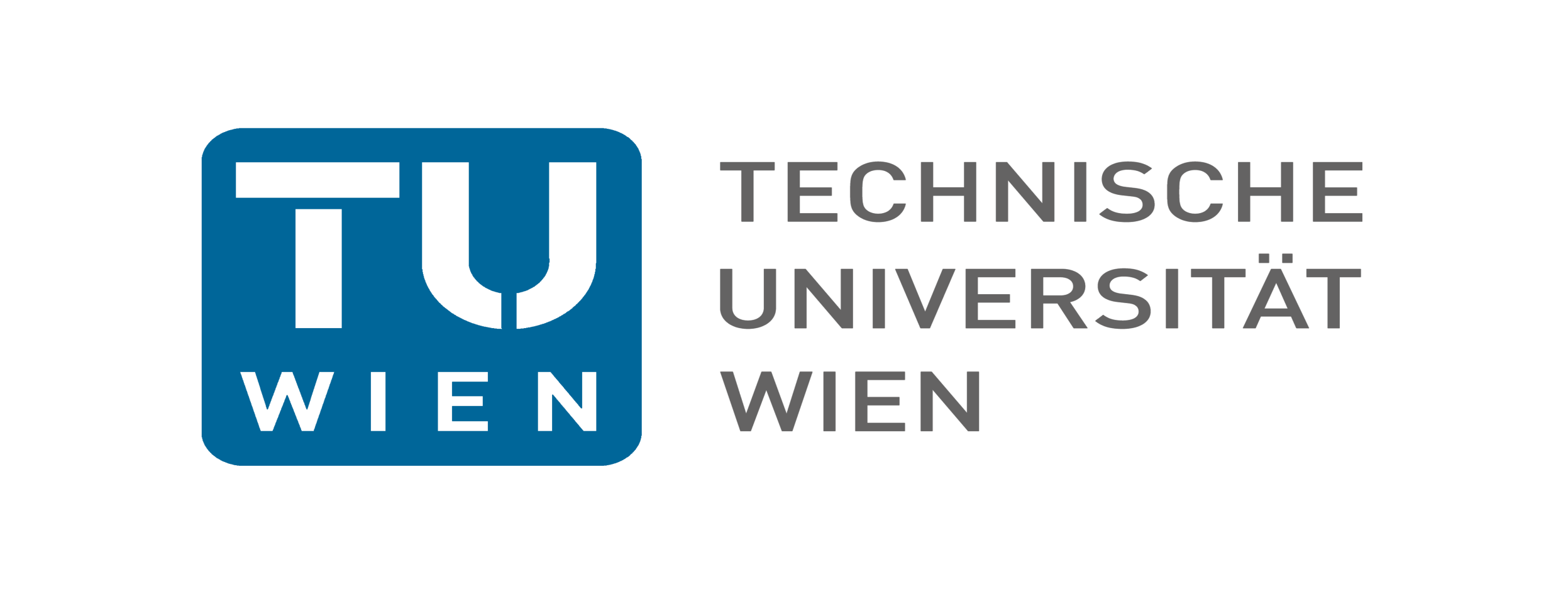Joint Theory Seminar
Tuesday 14:00-15:00
SS2022
Schedule
back| Date | Location | Title | Speaker | Abstract |
|---|---|---|---|---|
| 01.03.2022 | TU | Liouville and JT quantum gravity | Thomas Maertens | In this talk, we will discuss recent progress in understanding quantum gravity amplitudes in Liouville and JT gravity. We focus on two main results: the Liouville gravity results can be viewed as q-deformations of the JT answers, and Liouville gravity can be written as a 2d dilaton gravity model with a sinh dilaton potential. These facts can be linked when using the Poisson-sigma model framework. We end with some prospects towards understanding generic dilaton gravity models. Based on arXiv:2109.07770 and earlier work. |
| 08.03.2022 | online | Emergent spacetime from the bosonic master field of the IIB matrix model | Frans R. Klinkhamer | The IIB matrix model has been suggested as a particular formulation of nonperturbative superstring theory (M-theory). It has now been realized that the emerging classical spacetime may reside in its large-N master field. This bosonic master field can, in principle, give rise to Minkowski and Roberson-Walker spacetimes. The outstanding task is to solve the bosonic master-field equation, which is essentially an algebraic equation. First results have been obtained for small values of the matrix size N. This talk focuses on the basic ideas and open questions, while skipping most of the technical details. |
| 15.03.2022 | TU | New symmetries for general relativity | Simone Speziale | In the last few years there has been a lot of interest in asymptotic symmetries in gauge theories and general relativity, in relation with deep infrared physics and memory effects. I will first give a brief pedagogical introduction showing how the surface charges associated with asymptotic symmetries follow from a standard application of Noether's theorem, and then discuss three extensions of the BMS symmetries that have been proposed in the context of general relativity, with their motivations. Among the new results, an algebraic perspective on the flux-balance laws of gravitational waves, a proposed modification of the Barnich-Troessaert bracket for the charges, and the possibility of discriminating bulk-equivalent descriptions of gravity such as metric and tetrad formulations, with some speculative implications for quantum gravity. |
| 22.03.2022 | UV | String modes and fuzzy field theories in string modes formalism | Jurai Tekel | Fuzzy spaces are, among other things, toy models for spaces with a discrete structure at small distances. As such, they provide a laboratory to study the consequences of this discreteness on the properties of physical theories, for example, the theory of scalar fields. The standard approach to this theory is very similar to the usual treatment of field theories on continuous spaces - momentum basis, Feynman diagrams, and loop integrals. In this talk, we present a different formulation of the scalar field theory on the fuzzy sphere - in terms of the string modes, which are functions optimally localized in position and momentum space. We will first introduce the string modes and highlight their most important properties. Then, we will show how they greatly simplify the computation of loop contributions in scalar field theory in position space and lead to some new insights into the structure of the effective action. |
| 29.03.2022 | TU | Fast Scrambling due to Rotating Shockwaves in Rotating Black Holes | Rohan Poojary | We study the perturbation due to rotating shockwaves in BTZ geometries at late times and analyse the change in Mutual Information between the two subsystems belonging to the dual CFT$_L$ and CFT$_R$. We find that the scrambling of Mutual Information is in general governed by the Lyapunov index $\lambda_L$ which is bounded by $\kappa=\frac{2\pi}{\beta(1-\mu\mathcal{L})}\geq \frac{2\pi}{\beta}$ where $\mu=\rmi/\rpl$ and $\mathcal{L}$ is the angular momentum of the shockwave. For the special case of $\mathcal{L}$=$1$ we find the Mutual Information analytically, characterized by $\lambda_L=\kappa/2$ and with the scrambling time for large black holes $t_*=\frac{\beta(1-\mu)}{\pi}\log S$. If time permits I would also discuss consequences for the near horizon effective theory relevant to our observations. |
| 05.04.2022 | online | IR divergences and the effective action of supertranslation modes | Jakob Salzer | Scattering amplitudes of perturbative gravity in Minkowski space suffer from well-known infrared (IR) divergences. Nevertheless, as was shown by Weinberg in a seminal paper, these IR divergencies take on a universal form such that gravity amplitudes factorize into IR-finite and IR-divergent parts. Over the course of the last decade, close connections have been uncovered between the IR behavior of scattering amplitudes of perturbative gravity and the symmetries of asymptotically flat spacetimes. These symmetries are given by the BMS group, consisting of supertranslations and superrotations. In a similar vein, I will show in this talk that the above mentioned IR divergent contribution can be calculated from an effective action for the Goldstone bosons of broken supertranslations. Moreover, this action can be motivated starting from a well-defined variational principle of Einstein gravity near spatial infinity. |
| 12.04.2022 | No talk | |||
| 19.04.2022 | No talk | |||
| 26.04.2022 | UV | Probing relativistic gravity with radio astronomy | Michael Kramer | We experience a golden era in testing and exploring relativistic gravity. Whether it is results from gravitational wave detectors, satellite or lab experiments, radio astronomy plays an important complementary role. Here one can mention the cosmic microwave background, black hole imaging and, obviously, binary pulsars. This talk will provide an overview how these methods relate to each other, and will in particular focus on new results from the study of binary pulsars, where we can test the behaviour of strongly self-gravitating bodies with unrivalled precision. The talk will also give an outlook of what we can expect from new experiments, such as MeerKAT or the SKA. |
| 03.05.2022 | online | From dS to AdS and back | Massimo Taronna | In this talk I will explain some recent efforts that aim to understand the rules of the game for observables on the future boundary of dS space. Unlike in AdS, the boundaries of dS space are purely spatial with no standard notion of locality and time. This obscures how the boundary observables capture a consistent picture of unitary time evolution in the interior of dS space. I will explain how, despite this difference, the structural similarities between dS and AdS spaces allow to draw relations between boundary correlators in these two space-times. This can be used to import techniques, results and understanding from AdS to dS. |
| 10.05.2022 | TU | Charges, conserved quantities and fluxes in de Sitter spacetime | Aaron Poole | In this talk I will discuss conserved quantities in asymptotically locally de Sitter (dS) spacetimes, motivated by the broader aim of a developing a fully nonlinear understanding of the nature of gravitational waves in dS. I will begin with a review of the asymptotics of dS spacetimes, before showing that one can use the tools of the covariant phase space formalism (together with analytic continuation of analogous results in anti-de Sitter spacetime) in order to derive expressions for spatially conserved charges and temporally conserved quantities corresponding to boundary isometries. For spacetimes admitting no such isometries, I will present flux formulae which capture the effects of outgoing gravitational radiation and illustrate these via application to exact solutions, with particular emphasis on the Robinson-Trautman dS class. This talk is based on work in collaboration with Kostas Skenderis and Marika Taylor. |
| 17.05.2022 | online | Recent developments in superstring loop amplitudes | Oliver Schlotterer | In this talk, I will review motivations, results and strategies for loop amplitudes in superstring theories. Based on chiral splitting of correlation functions for closed-string vertex operators, a simplified result will be presented for two-loop five-point amplitudes involving massless type-II states. |
| 24.05.2022 | online | On Galilean Conformal Field Theory | Bin Chen | In the past decade, the renaissance of conformal bootstrap has enriched our understanding of conformal field theory and AdS/CFT correspondence. It would be interesting to develop the bootstrap program for other field theories with conformal-like symmetries. In this talk, I will introduce our studies on Galilean conformal field theories in the past few years. |
| 31.05.2022 | online | On the 6d Origin of 4d Non-invertible Duality Defects | Michele Del Zotto | It is well-known that six-dimensional superconformal field theories can be exploited to unravel interesting features of lower-dimensional field theories obtained via compactifications. In this short note we discuss an application of 6d (2,0) theories to exhibit infinitely many classes of examples of four dimensional theories with Kramers-Wannier-like non-invertible symmetries. |
| 07.06.2022 | No talk | |||
| 14.06.2022 | TU | Holography for Flatspace: The Carroll Perspective | Arjun Bagchi | Recent attempts at constructing holography for asymptotically flat spacetimes have followed two distinct directions: Celestial and Carrollian holography. In this talk, we provide an overview of the Carroll perspective which has had successes in lower dimensions previously. We then provide an answer to one of the most pressing questions in this formulation: how does one understand scattering in flat space from Carrollian CFTs. |
| 21.06.2022 | online | Twisted eleven-dimensional supergravity and exceptional Lie algebras | Ingmar Saberi | In recent years, there has been a great deal of progress on ideas related to twisted supergravity, building on the definition given by Costello and Li. Much of what is explicitly known about these theories comes from the topological B-model, whose string field theory conjecturally produces the holomorphic twist of type IIB supergravity. Progress on eleven-dimensional supergravity has been hindered, in part, by the lack of such a worldsheet approach. I will discuss a rigorous computation of the twist of the free eleven-dimensional supergravity multiplet, as well as an interacting BV theory with this field content that passes a large number of consistency checks. Surprisingly, the resulting holomorphic theory on flat space is closely related to the infinite-dimensional exceptional simple Lie superalgebra E(5,10). This is joint work with Surya Raghavendran and Brian Williams. |
| 28.06.2022 | TU | Metric reconstruction for non-radiative spacetimes | Roberto Oliveri | Multipole moments are important quantities to characterize spacetimes. In General Relativity, the most general vacuum solution with no incoming radiation is parametrized by two sets of infinite multipole moments. In this talk, we focus on non-radiative spacetimes and provide a characterization thereof in terms of a tower of multipole moments. This tower encodes non-radiative and non-stationary features of the gravitational field at null infinity, and generalizes the Geroch-Hansen moments for stationary spacetimes. Moreover, such a tower of moments is identified with charges associated to the 𝐿𝑤1+∞ algebra recently discovered in the structure of asymptotically flat spacetimes. |
About
back

The Joint Theory Seminar is held alternately at the University of Vienna and the Technische Universität Wien, either on site or online via Zoom.
The Topic of the seminar is recent theoretical research in the areas of mathematical physics, high energy physics, physics of fundamental interactions and particle physics.
The target audience for the talks are PhDs, postdocs and faculty members.
To stay informed please subscribe to our mailing list.
How to participate
Attending
Anyone can attend. To receive the link to the Zoom meeting please contact one of the organizers.
Giving a talk
Contact
backDaniel Grumiller
Associate Prof. Dr.techn.
Black holes and holography
Technische Universität Wien
Stefan Fredenhagen
Univ.-Prof. Dr.
Mathematical physics
University of Vienna
Romain Ruzziconi
Postdoctoral researcher
Black holes and holography
Technische Universität Wien
Emmanuele Battista
Postdoctoral researcher
Mathematical physics
University of Vienna